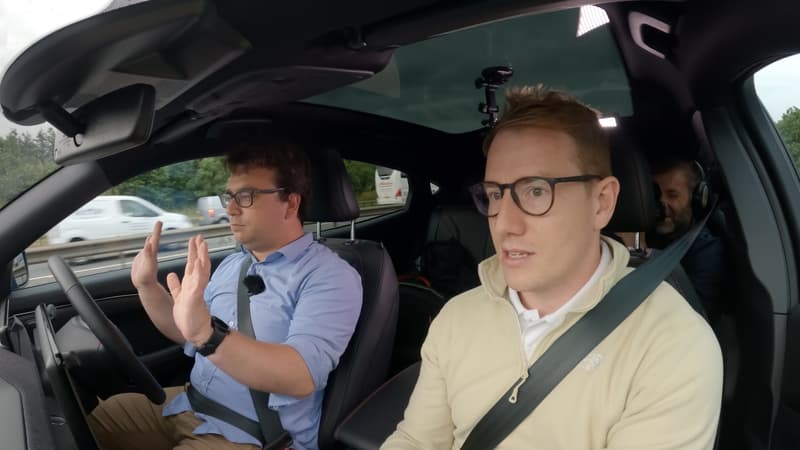Hands-free, at full speed on the motorway: Ford has been offering the first motorway-capable car in Europe for a few weeks now, thanks to an option that could soon reach the continent.
Entering the M11 motorway in north London, the small SUV offers the driver to let go of the wheel. It advances alone at 100 km/h, brakes behind a truck, before calmly resuming its journey, well in the middle of its lane.
The driver has his hands free (without really knowing what to do with them), but without touching the laptop, above all he must not take his eyes off the road: the car watches him through various cameras and infrared sensors (which pass through the sunglasses).
“Look at the road. Take back control,” hints the on-board computer after ten seconds if we look away. Then the car hits the brakes, sets the warnings.
Ford activated this option called “BlueCruise” in April 2023 in the UK on its electric flagship, the Mustang Mach-E. After debuting in the United States in 2021, the “BlueCruise” option allows 6,000 kilometers of highways to be released in Great Britain (“blue zones” equipped with four lanes and central dividers), from Dover to Scotland. 500 customers have already tried it: then they will have to pay 17.99 pounds (about 21 euros) per month to raise their hand.
“Soon” in Germany and France?
In North America, the option is also available in the flagship F-150 pickup or Expedition large SUV. 200,000 motorists use it, with no accidents to report, Ford says. Its GM competitor also offers hands-free driving.
The brands wage a war of reputation through autonomous driving, symbol of the car of the future: Mercedes already offers hands-free driving on the German highway, but only in traffic jams (up to 60 km/h); Tesla boss Elon Musk has long promised that fully autonomous driving (so-called Level 4) is for tomorrow.
Ford, for its part, is committed to immediate applications, and in 2022 it ended a research alliance on autonomous driving that it had with the startup Argo AI.
“We are optimistic about the future of Tier 4, but we are still a long way from seeing fully autonomous, high-volume, and cost-effective vehicles,” Ford CEO Jim Farley said in late 2022. “Things have changed and right now there is a huge opportunity for Ford to give people time when they are in their vehicle.”
An evolution, not a revolution
The American brand was thus the first to benefit from an exemption in the United Kingdom that allowed it to offer hands-free driving, stresses Douwe Cunningham, head of homologation at Ford of Europe.
He is currently discussing with the British authorities to take the next step: allow the car to change lanes to overtake, by activating the indicator. But what good is this option if you can’t write on your phone or read a book, for example?
“It’s an evolution, not a revolution,” admits Douwe Cunningham. According to him, this improved cruise control is a further step towards level 3 autonomous driving, which will allow driving to be entrusted to the computer in most situations.
“It allows motorists to relax, especially in the middle of traffic,” by “letting the car do the work,” says Tariq Willis, marketing expert for the American brand.
BlueCruise should be available “soon” in Germany, then France, with its 22,000 kilometers of eligible motorways, says Mr Cunningham.
Source: BFM TV


